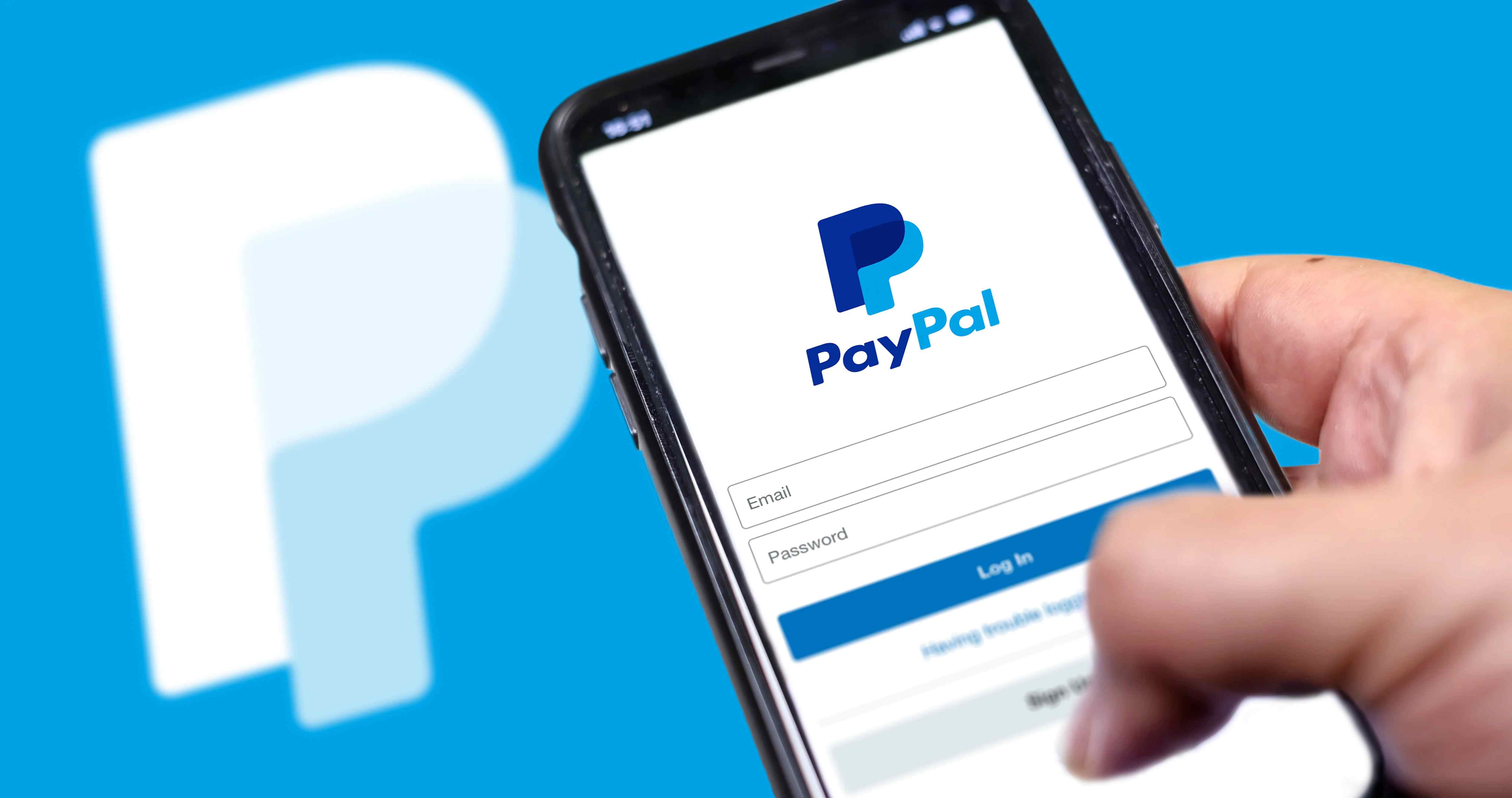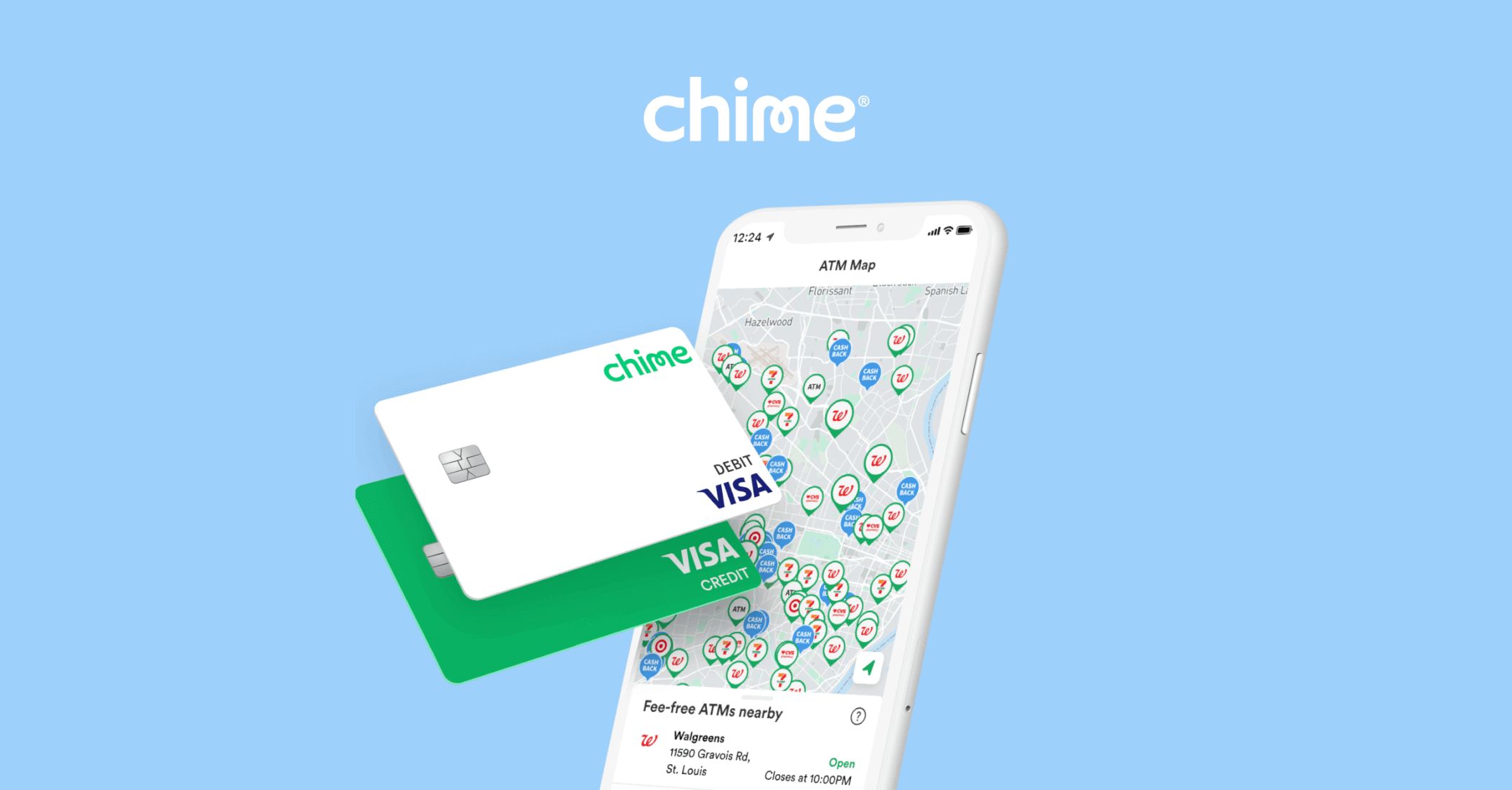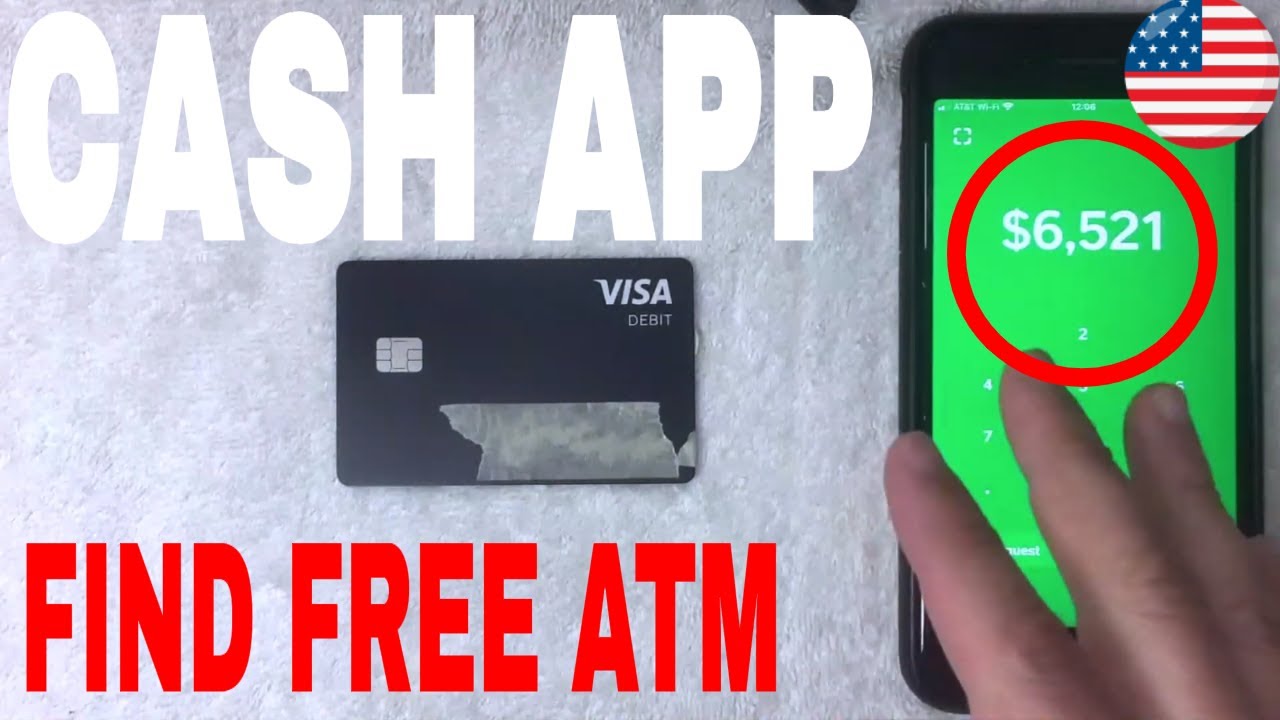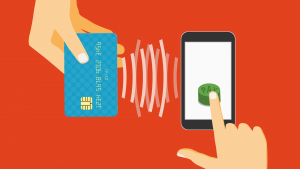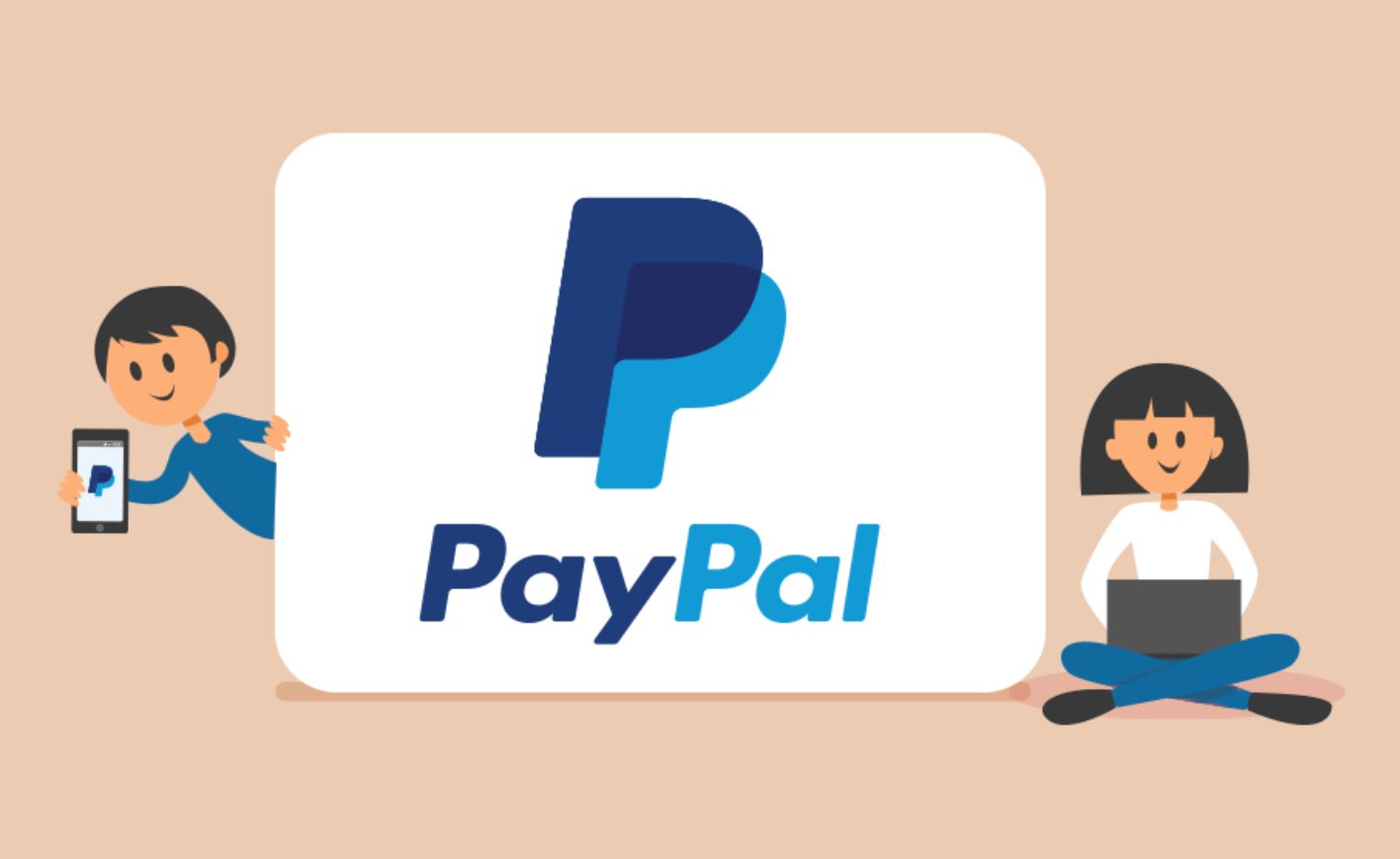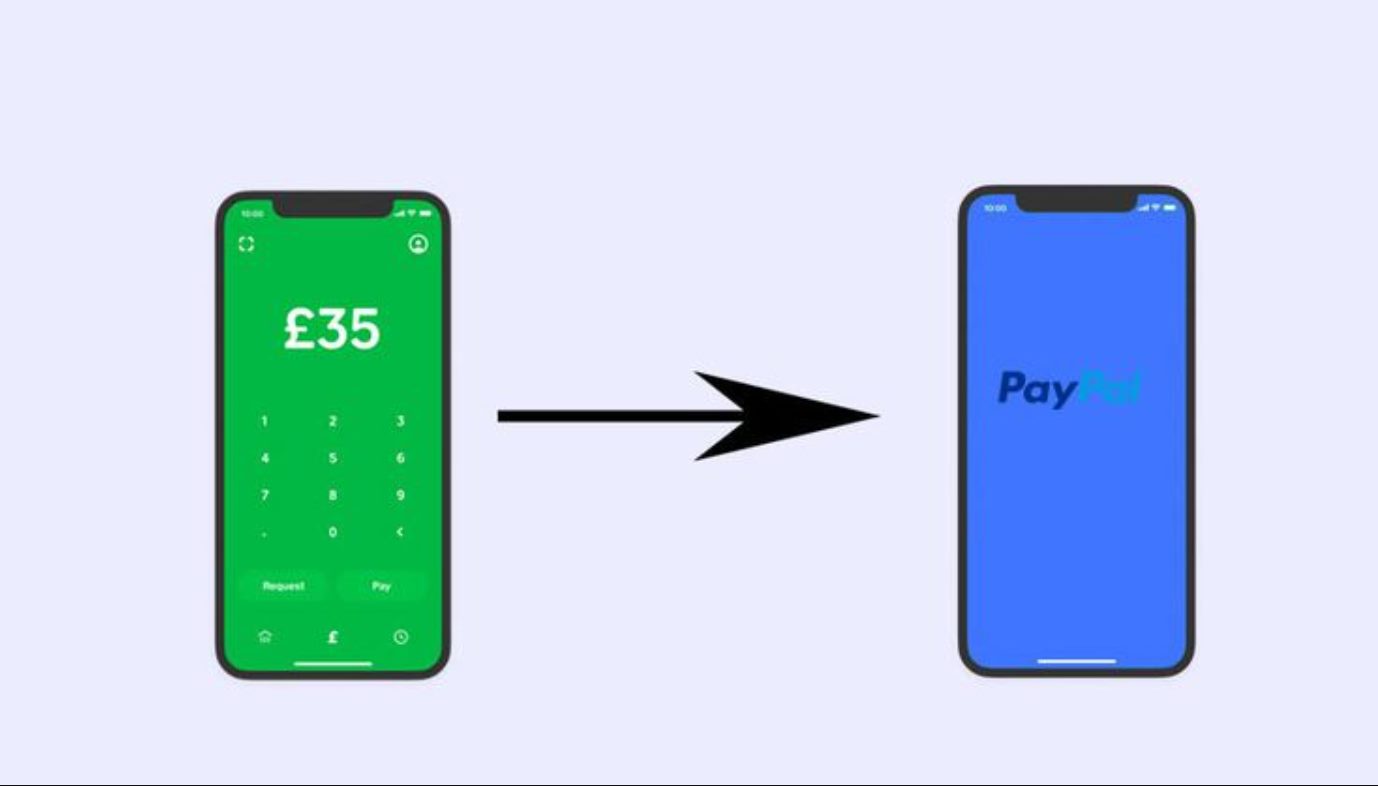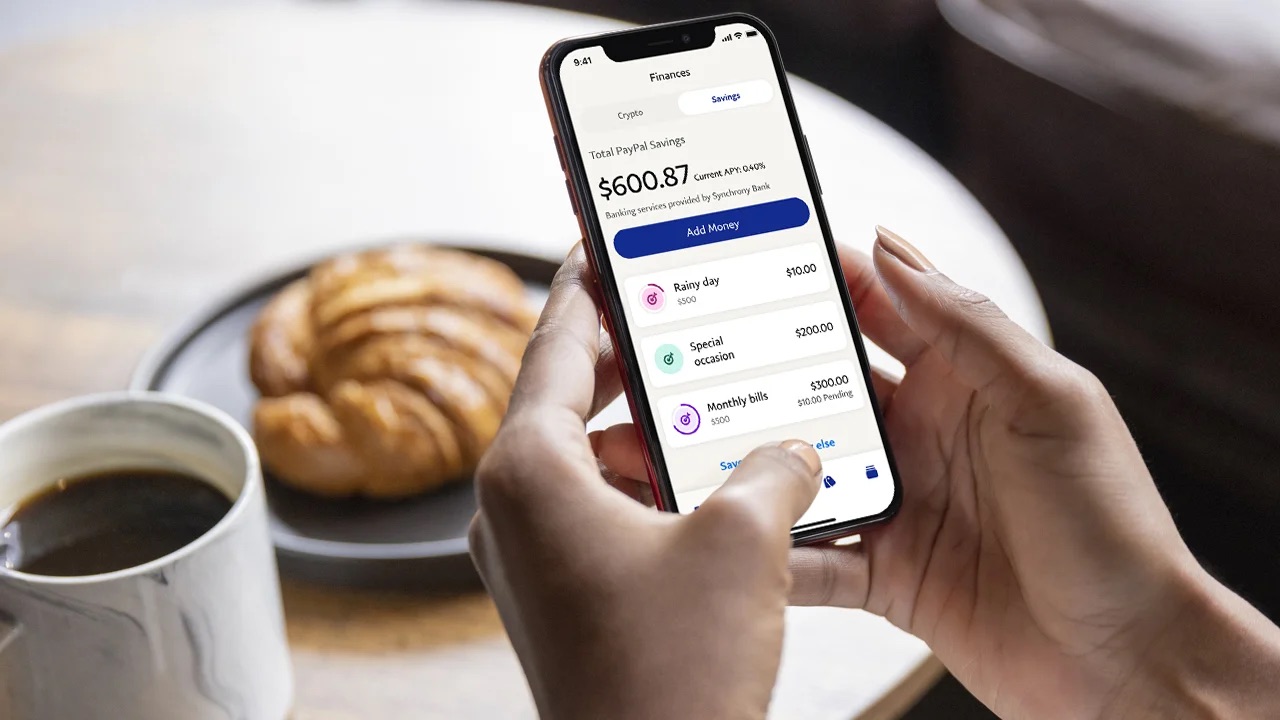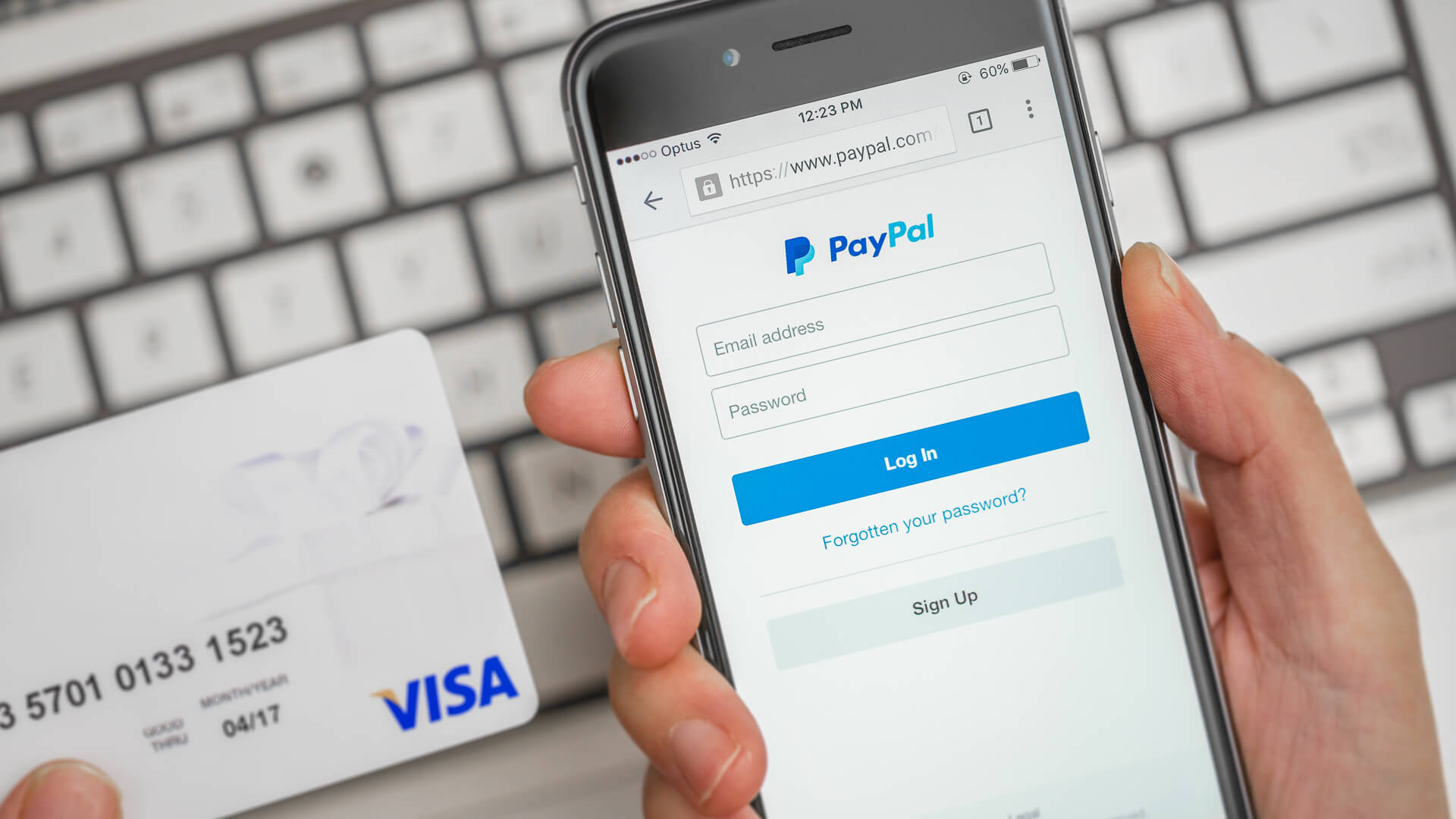Introduction
Welcome to the world of online transactions, where the convenience of sending money with just a few clicks has become an integral part of our daily lives. One of the most popular online payment platforms is PayPal, which allows users to easily transfer funds to friends, family, or businesses across the globe. However, despite the platform’s generally smooth operation, there are occasions when transfers don’t go as smoothly as expected.
In this article, we will explore some common issues that users may encounter when trying to transfer money from PayPal. Whether you’re a seasoned PayPal user or new to the platform, understanding the possible obstacles that can arise during the transfer process can save you both time and frustration.
It’s important to note that while PayPal strives to provide a seamless experience, there are external factors that can affect the successful completion of a transfer. By familiarizing yourself with these potential setbacks, you can be better prepared to troubleshoot and resolve any transfer issues that may arise.
So, if you’ve ever found yourself asking, “Why won’t my money transfer from PayPal?” – read on to discover common reasons behind failed or delayed transfers, as well as the steps you can take to resolve them.
Common Issues with Money Transfers
When initiating a money transfer from your PayPal account, it’s essential to be aware of the potential pitfalls that can arise. Understanding these common issues will not only help you troubleshoot any problems but also ensure a smoother transaction process.
One common issue that users encounter is insufficient funds in their PayPal account. Before initiating a transfer, make sure that you have enough balance in your account to cover the transfer amount, including any associated fees. If you don’t have sufficient funds, the transfer may fail or be delayed until you add more money to your account.
Another cause of money transfer problems is account verification issues. PayPal has strict security measures in place to protect users’ accounts and prevent fraudulent activity. If your account is not fully verified, you may face limitations or restrictions on your transfers. To ensure smooth transfers, make sure to complete all necessary verification steps, such as confirming your email address and linking a bank account or credit card to your PayPal account.
Transaction holds can also cause delays in money transfers. PayPal sometimes places temporary holds on certain transactions for security reasons. These holds can occur if the transfer involves a different currency, a new recipient, or if PayPal suspects potential fraudulent activity. If your transfer is held, it’s best to contact PayPal customer support for assistance in resolving the issue.
Incorrect bank information is a frequent cause of failed transfers. Ensure that you provide accurate and up-to-date bank details, such as the correct account number and routing number, when initiating a transfer. Double-checking these details can prevent delays or rejections caused by invalid or incorrect information.
Technical glitches can also disrupt the smooth processing of money transfers. While rare, system issues or server maintenance can occasionally impact PayPal’s services. If you suspect that technical problems are causing your transfer issues, it’s advisable to wait for a while and try again later. You can also check PayPal’s official website or contact customer support for any ongoing system notifications or updates.
PayPal imposes certain limitations on transfers to protect both the sender and recipient. These limitations can include maximum transaction amounts or restrictions on certain countries or currencies. If you encounter transfer problems due to payee limitations, review PayPal’s policies or contact customer support for further information.
Lastly, choosing the wrong currency when initiating a transfer can lead to issues. PayPal supports various currencies, and if you mistakenly select the wrong one, the transfer may fail or incur additional fees for currency conversion. Always double-check the currency selection before confirming the transfer to ensure the correct amount is sent in the intended currency.
If you experience any issues with your money transfers from PayPal, it’s crucial to promptly contact PayPal’s customer support for assistance. They have dedicated teams available to address transfer-related concerns and help resolve any problems you may encounter.
Insufficient Funds
One of the most common reasons for failed or delayed money transfers from PayPal is insufficient funds in your account. Before initiating a transfer, it is essential to ensure that you have enough balance to cover the transfer amount, including any associated fees.
If you attempt to transfer more money than you have in your PayPal account, the transfer will not go through. In some cases, PayPal may offer an option to cover the deficit by withdrawing the remaining funds from a linked bank account or credit card. However, if these backup funding sources are not available or insufficient, the transfer will be declined or put on hold until you deposit enough funds into your PayPal account.
To avoid the issue of insufficient funds, regularly monitor your PayPal balance and ensure that you have enough funds for the planned transfers. It is also wise to consider any fees associated with the transfer, such as currency conversion fees or international transfer fees, and account for them when calculating the required balance in your PayPal account.
If you are consistently experiencing insufficient funds for your transfers, you may want to consider adding a backup funding source to your PayPal account. By linking a bank account or credit card, you can ensure that PayPal has an alternate source to draw funds from if your PayPal balance is insufficient.
Additionally, it is a good practice to review your transaction history regularly to keep track of your expenses and upcoming transfers. This way, you can budget accordingly and maintain an adequate balance in your PayPal account to avoid any disruptions in your money transfers.
If you encounter a transfer failure due to insufficient funds, it is recommendable to immediately deposit the required amount into your PayPal account. Once the funds are available, you can reattempt the transfer, ensuring that your PayPal balance is sufficient to cover the transaction and any associated fees.
Remember, staying on top of your PayPal account balance and ensuring sufficient funds will greatly reduce the risk of encountering issues with your money transfers. Regularly monitoring your account, budgeting accordingly, and linking backup funding sources can help maintain a seamless transfer experience.
Account Verification Issues
Account verification is a crucial step in ensuring the security and reliability of online money transfers through PayPal. Failure to complete the necessary verification process can result in limitations or restrictions on your transfers, causing frustration and delays.
When you first create a PayPal account, you will be prompted to verify your email address. This is usually done by clicking on a verification link sent to the email address you provided during the registration process. Verifying your email address is a simple and essential step to activate your PayPal account and gain access to its full features.
In addition to email verification, PayPal may require further account verification to increase user security. This can include linking a bank account or credit card to your PayPal account, providing proof of identification, or confirming your address. These verification measures help reduce the risk of fraudulent activity and ensure the legitimacy of transactions.
If you encounter issues with account verification, make sure you have followed all the necessary steps and provided accurate and up-to-date information. Double-checking the information you entered during the registration process can help identify any errors or discrepancies that may be causing the verification failure.
If your PayPal account is already verified, but you are still experiencing transfer issues, it is advisable to contact PayPal’s customer support. They will be able to investigate the situation and provide guidance on resolving any account verification issues you may be facing.
It’s important to note that account verification requirements may vary depending on your location and the specific regulations governing online transactions in your country. PayPal may also periodically review and update its verification policies, so it’s essential to stay informed about any changes and comply with the latest requirements.
By completing the necessary account verification steps and keeping your information updated, you can ensure a smooth transfer process while maintaining the security of your PayPal account. Regularly check your account to ensure that it remains in good standing and to address any outstanding verification requirements promptly.
If you encounter any difficulty or have questions regarding the account verification process, don’t hesitate to reach out to PayPal’s customer support. They have dedicated teams available to assist you in resolving any account-related issues and ensuring a seamless experience with your money transfers.
Transaction Holds
Occasionally, PayPal may place temporary holds on certain transactions for security reasons. These holds are put in place to protect both the sender and the recipient, and while they can be frustrating, they are an important part of PayPal’s commitment to preventing fraudulent activity.
There are several reasons why PayPal may place a hold on a transaction. One common reason is if the transfer involves a different currency. PayPal may temporarily hold the funds to ensure that the currency conversion process is accurate and secure, protecting both parties involved in the transaction.
If you are sending money to a new recipient or if PayPal detects potentially suspicious activity, they may also initiate a hold on the transfer. This is done to verify the legitimacy of the transaction and ensure that it is authorized by the account owner.
In some cases, PayPal may place a hold on a transaction if they detect that the account has had an increased risk of fraudulent activity or if there are insufficient funds in the sending account. This proactive measure helps prevent unauthorized transfers and protects both sellers and buyers.
If your transfer is held, it’s important to first confirm that the hold is legitimate. Check for any notifications or messages from PayPal regarding the hold, as they may provide further information on the reason for the hold and the steps you can take to resolve it.
To resolve a transaction hold, you can contact PayPal’s customer support. They will be able to guide you through the verification process, provide any additional documentation or information needed, and help you release the funds and complete the transfer.
It’s worth noting that transaction holds are generally temporary, lasting for a few days or up to 21 days, depending on the specific circumstances of the transfer. The length of the hold may vary based on factors such as the buyer or seller’s history, the transaction amount, and other security considerations.
While transaction holds can be frustrating, it’s important to remember that they are in place to protect users and maintain the overall security of PayPal’s platform. By understanding and complying with the verification process, you can help expedite the release of held funds and ensure a smoother experience with future transfers.
If you encounter a transaction hold or have any questions or concerns about the hold process, it is recommended to contact PayPal’s customer support. They are available to assist you and provide the necessary guidance to resolve any hold-related issues and ensure a successful money transfer.
Incorrect Bank Information
One common reason for failed money transfers from PayPal is providing incorrect bank information. When initiating a transfer, it is crucial to double-check and ensure that you enter accurate and up-to-date bank details to avoid any delays or rejections in the transfer process.
When linking your bank account to PayPal, make sure to enter the correct account number, routing number, and any other required information. Even a minor typo or error in the bank details can result in a failed transfer or the funds being deposited into the wrong account.
Before initiating a transfer, it may be helpful to contact your bank and verify the correct account and routing numbers associated with your bank account. This will ensure that you have the most accurate and up-to-date information to enter into your PayPal account.
If you have already initiated a transfer and later discover that you provided incorrect bank information, it is crucial to act quickly. Contact PayPal’s customer support immediately to report the error and provide the correct bank details. They may be able to assist you in correcting the information before the transfer is processed or guide you on the necessary steps to resolve the issue.
In some cases, if the transfer has already been processed with incorrect bank information, the funds may be returned to your PayPal account. However, this process can take time, and it is essential to maintain communication with PayPal and your bank to ensure that the funds are properly credited back to your PayPal account.
To avoid the issue of incorrect bank information in the future, always take the time to carefully double-check the details you enter when linking your bank account to PayPal. It is also a good practice to review and update your bank information in your PayPal account if there are any changes to your bank account or if you switch to a different bank.
If you are unsure about the correct bank information or have any concerns about the transfer, it is best to reach out to your bank or PayPal’s customer support for guidance and clarification. They will be able to provide you with the necessary information and assist you in ensuring that your money transfers are correctly routed to the intended bank account.
By providing accurate and up-to-date bank information, you can help prevent any potential issues or delays in your money transfers and ensure a smoother experience with PayPal’s services.
Technical Glitches
While PayPal strives to provide a seamless and reliable platform for money transfers, technical glitches can occasionally occur, causing disruptions in the transfer process. These technical issues can range from system errors to maintenance updates and can affect the smooth processing of your transactions.
If you experience a technical glitch during a money transfer, the first step is to remain calm and avoid panic. Technical issues are typically temporary and can often be resolved with patience and a few simple steps.
If you suspect that the issue is related to your device or internet connection, it’s advisable to first check if you have a stable internet connection and try accessing PayPal from a different browser or device. Sometimes, clearing your browser’s cache and cookies can also help resolve any temporary glitches.
If the problem persists, it may be a system-wide issue on PayPal’s end. In such cases, it is advisable to check PayPal’s official website or social media pages for any reported service disruptions or maintenance updates. These sources will often provide information about ongoing technical issues and their estimated resolution times.
If there is a known technical issue, the best course of action is to wait patiently until PayPal resolves the problem. Attempting to initiate multiple transfers or repeatedly refreshing the page may further delay the processing of your transactions. It’s important to note that initiating multiple transfers during a technical glitch can result in duplicate transfers or other unintended consequences.
In situations where the technical issue persists for an extended period, it is advisable to contact PayPal’s customer support. Provide them with details about the problem you are encountering and any error messages you might have received. Their support team will be able to assist you further and provide updates on the status of the technical issue.
Remember, technical glitches are rare occurrences, and PayPal has dedicated technical teams working diligently to resolve any issues that may arise. By staying informed and patient, you can ensure a smoother experience with PayPal and minimize any potential disruptions to your money transfers.
Keeping your browser and device up-to-date with the latest software versions, regularly clearing cache and cookies, and having a stable internet connection can also help prevent or minimize technical glitches during your transactions.
In summary, if you experience a technical glitch during a money transfer, try troubleshooting by checking your internet connection, using a different device or browser, and clearing cache and cookies. If the issue persists, refer to PayPal’s official sources for updates and contact their customer support for further assistance.
Payee Limitations
PayPal imposes certain limitations on money transfers to ensure the security and compliance of their platform. These limitations are put in place to protect both senders and recipients, preventing fraudulent activity and adhering to regulatory requirements.
One common payee limitation is the maximum transaction amount. PayPal sets limits on how much money can be transferred in a single transaction, depending on various factors such as your account’s verification status, transaction history, and the recipient’s account status. If you encounter a transfer failure due to a payee limitation, it is advisable to review PayPal’s policies to understand the specific transaction limits and guidelines.
PayPal may also impose limitations based on the recipient’s location or the specific country or region involved in the transaction. Certain countries have additional restrictions or regulations when it comes to cross-border transfers, requiring extra scrutiny and verification processes to ensure compliance.
If you are attempting to transfer funds to a recipient in a restricted country, it’s important to educate yourself on the specific regulations pertaining to that region. Review PayPal’s guidelines or contact customer support for further information on the limitations and requirements involved in such transfers.
Furthermore, PayPal may limit transfers to certain types of businesses or industries. Certain high-risk industries, such as online gambling or adult entertainment, may be subject to stricter regulations and limitations. It’s important to be aware of any limitations that may apply to your intended recipient’s business or industry to avoid any issues with your money transfers.
In some cases, PayPal may also place temporary limitations on transactions if they suspect potential fraudulent activity. These temporary restrictions are typically resolved after additional security checks and verifications are completed. If you encounter such a limitation, it is recommended to follow the instructions provided by PayPal and cooperate with their security measures to resolve the issue.
PayPal’s payee limitations are in place to protect users and maintain the overall integrity of their platform. While they may temporarily inconvenience users, they are vital for maintaining a secure environment for online money transfers.
If you are unsure whether a payee limitation applies to a specific transfer or recipient, it is advisable to contact PayPal’s customer support for clarification. They will be able to provide you with the necessary information and guidance to ensure compliant and successful money transfers.
By understanding and respecting PayPal’s payee limitations, you can navigate the transfer process more effectively and avoid potential issues. Regularly reviewing PayPal’s policies and guidelines will help you stay informed about any updates or changes in their payee limitations.
Wrong Currency Selection
When initiating a money transfer through PayPal, it is essential to ensure that you select the correct currency for the transaction. Selecting the wrong currency can cause issues and potentially lead to unexpected charges or failed transfers.
PayPal supports various currencies, allowing users to send money to recipients around the world. However, if you choose the wrong currency during the transfer process, PayPal will attempt to convert the funds into the chosen currency before completing the transfer.
If the currency conversion is not possible or if you select a currency that is incompatible with your PayPal account or the recipient’s account, the transfer may fail. Additionally, incorrect currency selection can result in additional fees for currency conversion, negatively impacting the overall transaction.
To avoid the issue of wrong currency selection, always double-check and ensure that you choose the appropriate currency for the recipient’s location. Take into consideration the currency preferences of the recipient’s country or region to ensure smooth processing of the transfer.
If you are unsure about the recipient’s currency or are sending money to a country with multiple currency options, it is advisable to contact the recipient or refer to reliable currency conversion sources. These sources can assist you in determining the correct currency to select during the transfer process.
In cases where you have mistakenly chosen the wrong currency, it is recommended to contact PayPal’s customer support immediately. They may be able to assist you in rectifying the issue before the transfer is processed. Keep in mind that currency conversion fees or charges may still apply, depending on PayPal’s policies and the specific circumstances of the transfer.
To avoid potential issues with currency selection, it may be helpful to set up a currency balance in your PayPal account. This allows you to hold and manage funds in multiple currencies, which can simplify transfers and minimize the need for currency conversion.
Remember to regularly review and update your currency preferences in your PayPal account, especially if you frequently send money to recipients in different countries or regions. This will help ensure that you choose the correct currency for each specific transfer and avoid any unnecessary complications or fees.
If you encounter any difficulties or have questions regarding currency selection during a PayPal money transfer, it is best to contact PayPal’s customer support for assistance. They will be able to provide the necessary guidance to help you rectify the issue and ensure a seamless currency transfer process.
Customer Support and Contacting PayPal
When encountering issues or difficulties with your money transfers on PayPal, it is essential to know how to reach out to their customer support. PayPal provides various avenues for assistance, ensuring that users can receive prompt and helpful support to resolve their concerns.
If you encounter any transfer-related problems, the first step is to visit PayPal’s official website. They offer a comprehensive Help Center that contains a wealth of information and frequently asked questions (FAQs) that can address many common concerns and provide step-by-step instructions for troubleshooting.
If the Help Center does not resolve your issue, PayPal also offers customer support via phone and email. You can find the appropriate contact information for your region on the PayPal website. When contacting PayPal’s customer support, make sure to have your account details and any relevant transaction information ready, as this will help expedite the resolution process.
When reaching out to PayPal’s customer support, it is advisable to be clear and concise in explaining your issue. Provide all necessary details and any error messages or notifications you may have encountered during the transfer process. This will help the support team better understand your concern and provide you with the most relevant guidance.
PayPal’s customer support is known for their professional and efficient service, and they are committed to assisting you with any transfer-related issues or inquiries you may have. If you have any questions about specific transfer limits, verification requirements, delays, or any other concerns, don’t hesitate to contact them for clarification and guidance.
If you are an active PayPal user, it may be beneficial to save the customer support contact information in your phone or bookmark it for easy access. This way, you can quickly reach out to PayPal’s support team whenever you encounter any issues or need additional information.
In addition to traditional customer support channels, PayPal also offers a community forum where users can ask questions, share experiences, and seek advice from fellow PayPal users. Engaging with the community can provide valuable insights and solutions to common transfer issues.
Overall, PayPal aims to provide excellent customer support to ensure a positive user experience. Utilize their resources, such as the Help Center and customer support channels, to address any transfer-related concerns promptly and effectively.
Remeber, if you encounter any difficulties or have questions regarding your PayPal money transfers, don’t hesitate to reach out to PayPal’s customer support. They are available to assist you and provide the necessary guidance to ensure successful and stress-free money transfers.
Conclusion
Money transfers through PayPal have revolutionized the way we send and receive funds online. However, it’s important to be aware of the common issues that can arise during the transfer process. By understanding these challenges and knowing how to address them, you can navigate the world of online transactions more confidently.
From dealing with insufficient funds to encountering technical glitches or payee limitations, there are several potential hurdles that can impact the successful completion of your money transfers. It’s crucial to double-check your PayPal account balance, ensure accurate bank information, and select the correct currency to minimize the risk of encountering these issues.
Account verification is also a key aspect of smooth money transfers. By completing the necessary verification steps and keeping your account information updated, you can avoid limitations or restrictions that may impede your transfers.
When issues do arise, PayPal’s customer support is there to assist you. With various support channels available, including the Help Center, phone support, email, and a community forum, you have access to the resources and guidance needed to resolve any concerns efficiently.
Remember to stay informed about PayPal’s policies and stay up-to-date with any changes or updates. Regularly reviewing your account settings and transaction details will help ensure a hassle-free experience with your money transfers.
Overall, while occasional transfer issues may occur, PayPal remains a secure and reliable platform for online transactions. By understanding the common issues, utilizing the available resources, and taking proactive steps to address them, you can continue to enjoy the convenience and ease of PayPal’s money transfer services.







